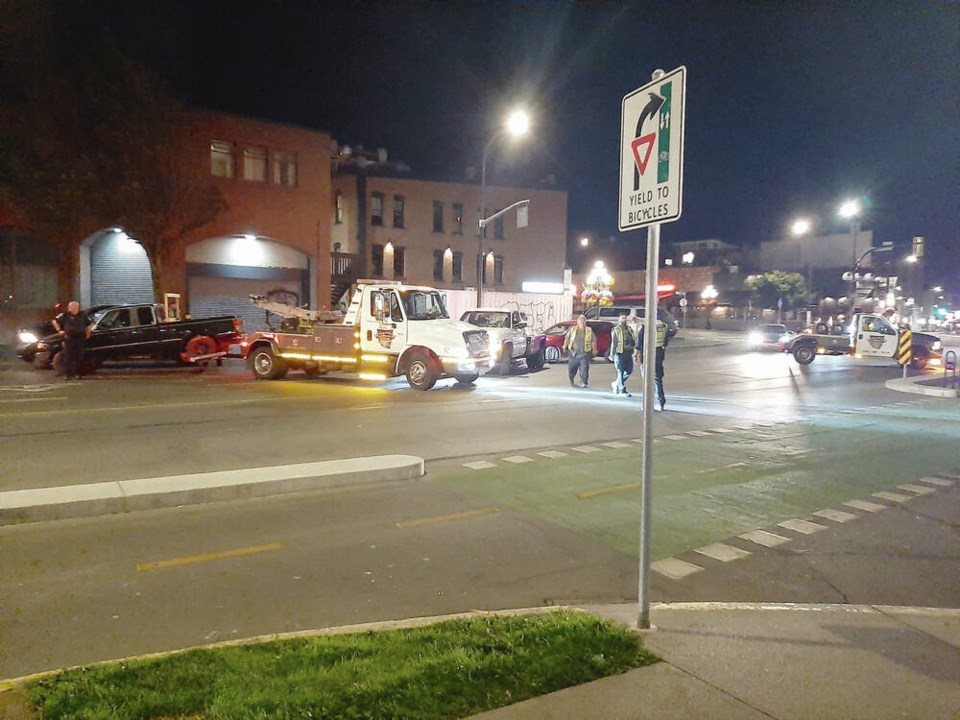It was disturbing to read last August that VicPD ran out of both tow trucks and officer time to process the number of impaired drivers they intercepted in downtown and Esquimalt road blocks. Twenty-four suspected impaireds in a matter of a few hours.
An aberration? Perhaps it was just a pleasant summer night combined with some unbridled party fever, a need to imbibe as COVID restrictions were finally loosening up at last. I doubt it.
In 2010, sa���ʴ�ý enacted some of the toughest drunk driving laws in sa���ʴ�ý and long term they have been effective, particularly in reducing alcohol related driving deaths. But like most other jurisdictions, public complacency sets in after time. Initially cases drop but eventually impaired drivers climb back behind the wheel and cases start rising again. sa���ʴ�ý numbers are generally good in comparison but as we saw last August there’s work to be done. Too much work.
Even before COVID there was trouble. In 2019 police agencies reported 85,673 incidents of impaired driving in sa���ʴ�ý. That was nearly 20% higher than 2018 and the highest it’s been in 10 years. What is perhaps more disturbing is that the rate of alcohol-impaired driving incidents, usually meaning crashes, including times when impairment was caused by both alcohol and drugs, increased by 15%. The rate of drug-impaired driving rose 43%. Any post COVID euphoria would have no bearing on these stats.
To be fair, drug impaired driving still represents only about one-tenth of those police reported impaired cases. Any form of impaired driving is bad news. But as we edge along into a post COVID world and the inevitable need to celebrate coming with it, it’s that combination of alcohol and drug impairment that worries me.
In sa���ʴ�ý, the use of cannabis has grown steadily since it was legalized in October of 2018. According to UVic’s Institute for Substance Use Research, sa���ʴ�ý wholesaled 8,000 kilos of product to licenced dealers from October 2018 to December 2020. In per capita terms, that translated to a rise in sales from 63.8 milligrams to 129.4 milligrams in less than two years.
The report also concludes that: “…cannabis potency has increased while prices for the most common subcategories have decreased, with more potent products costing less.” It recommends that minimum unit pricing, product specific taxes and potency limits would probably have a public health benefit.
The problem at the moment for road users is that science is not yet able to give us a clear picture of the drunk and drugged combo driver. That’s because cannabis can be detected in bodily fluids for days, even weeks, after consumption. So was it more alcohol or weed that led to the crash? There’s no doubt that steadily improving detection technology will soon give us these answers.
What is becoming clear already is that for drivers, the drunk and drugged combo is deadly. In U.S. studies from 1999 to 2010, marijuana was the “illicit” drug most frequently found in those who were involved in crashes, including fatalities.
Two large European studies from the early 2000s found that people with THC, the main ingredient in cannabis, in their blood were almost twice as likely to be responsible for a fatal crash than drivers who had not used drugs or alcohol. Drivers found to have high levels of THC in their blood at a crash scene are three to seven times more likely to be responsible for the incident than drivers who had not used drugs or alcohol.
These and other studies pretty much confirm what traffic cops have known forever. The risk created by toking up in combination with alcohol is greater than that for either drug by itself.
As cannabis use becomes more normalized in our society, I’m asking young people in particular to think about the consequences of combo-impaired driving, especially how it might affect their lives in the long term.
Forget for a minute the immediate consequences of having your car, or worse, your parents’ car impounded or the possible criminal or administrative fines and suspensions the system can lay on you.
Think instead of the day you’ll be sitting across a desk from an important person, on the verge of landing a really good job that could change your life. One of the questions could be: “Have you ever been convicted of an alcohol driving offence?” Or you’re travelling to Disneyworld in Florida with family or friends for that once in a lifetime trip when that surly U.S. immigration officer asks you that same question.
The immediate penalties for drugged or drunk driving are bad enough. The lifetime consequences can be just as bad.



